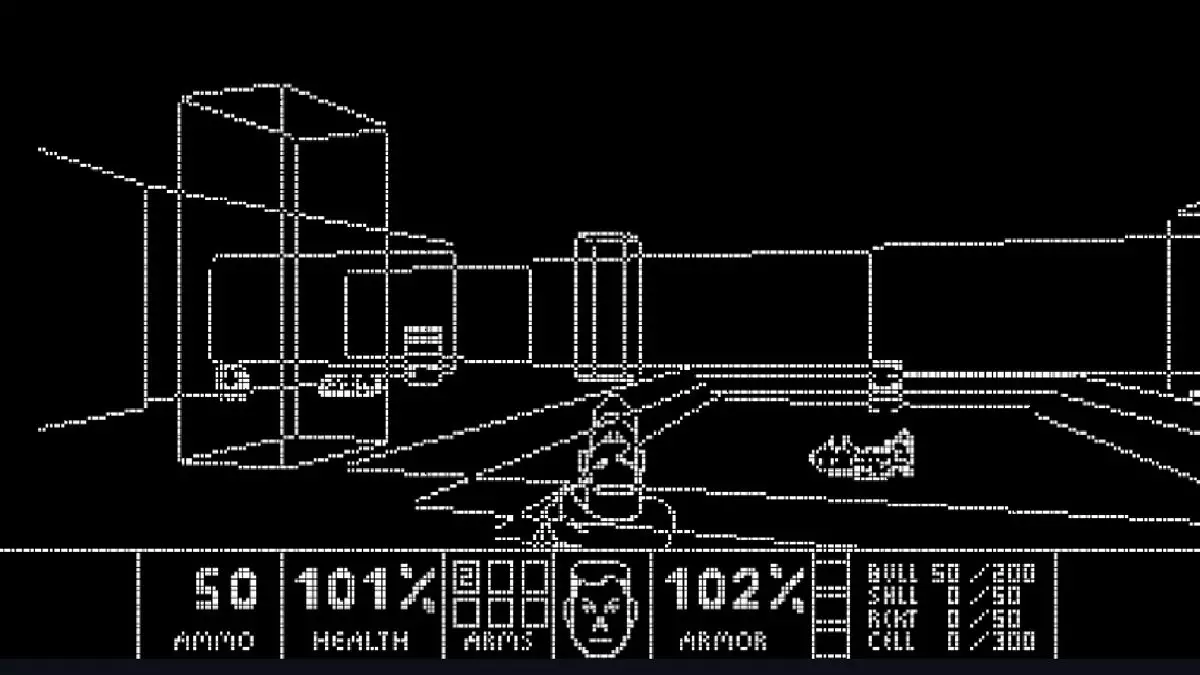Since its debut in 1993, the game Doom has shaped the landscape of first-person shooters and influenced countless facets of gaming culture. Known for its fast-paced gameplay and immersive graphics—revolutionary for its time—Doom has since transcended its original purpose as mere entertainment. It has evolved into a platform for experimentation and creativity, continuously engaging hobbyists, developers, and even researchers. The very idea that Doom could be reengineered to function on bizarre hardware configurations illustrates a dynamic fusion of nostalgia and technical ingenuity that has kept the game relevant in a rapidly changing technological landscape.
Enter Quandoom, a project born from the mind of GitHub user Lumorti, which is an attempt to adapt the classic game to the intricate world of quantum computing. When engaging with this ambitious endeavor, it’s crucial to understand the challenge it presents. Quantum computers operate based on quantum bits (qubits), leveraging principles of quantum mechanics such as superposition and entanglement. The result is a fundamentally distinct processing approach compared to traditional binary computing. While it’s promising to see groundbreaking tech being pushed to run applications as seemingly antiquated as Doom, one must recognize that the current scope of quantum computing still has substantial barriers to overcome.
The daunting statistics speak volumes: Quandoom requires a staggering 70,000 qubits and 80 million gates to function. As of the latest updates, Atom Computing has claimed the title of the most powerful quantum machine with a mere 1,225 qubits. This striking discrepancy highlights the chasm between aspiration and current capability in quantum computing, where enthusiasts are left waiting for the hardware to catch up with their imaginative exploits.
Interestingly, the version of Doom that’s been translated into this realm isn’t a full-fledged adaptation but rather a streamlined iteration featuring only the first level. While it may be enjoyable for some, Quandary captures the essence of compromise inherent in running classic software on experimental hardware. The simplification extends beyond mere levels; the game’s graphical display relies on basic wireframe graphics, devoid of typical features such as music and engaging enemy interactions. These adaptations reflect the limitations imposed by quantum computing technology, necessitating a prioritization of critical functionalities while sacrificing the intricate experiences that gamers know and love.
Despite the challenges, the sheer audacity of the project adds an inventive flair to the initiative, suggesting a daring exploration into uncharted territories. The challenges of simplifying the game mechanics and graphics cannot overshadow the underlying ingenuity; rewriting decades-old code for a theoretical hardware setup is no small feat. Lumorti has compiled approximately 8,000 lines of C++ code to facilitate this complex juxtaposition of gaming and quantum physics—a reflection of the overlaps between various fields of study.
Doom’s trial run on quantum equipment isn’t isolated—it’s part of a larger trend where developers are pushing the boundaries of what’s possible. Experiments like Quandoom not only provide entertainment value but also educational insights into the nuances of quantum mechanics. As more developers tackle similar daunting projects, we may start to uncover innovative solutions that bridge the gap between gaming and cutting-edge technology.
If history is a guide, it’s possible that these explorations could play a role in demystifying quantum computing, paving the way for a future where such technologies are as accessible as traditional gaming platforms. Just like coding a game may require real-time problem solving, the quantum variant introduces a completely new set of rules. Adapting beloved classics like Doom requires ingenuity and pushes the envelope of what participants understand about interactive media and advanced programming.
Ultimately, the endeavor to run Doom on a quantum computer encapsulates more than just the desire to revisit a classic game. It symbolizes a merge of scientific exploration, technological innovation, and cultural engagement. While Quandary still exists on the fringes of the quantum computing frontier, it ignites a broader conversation on the possibilities of what these emerging technologies can achieve. The whimsical idea of growing a rat brain and teaching it to play Doom, while seemingly bizarre, merely underscores the playful nature at the intersection of science and entertainment.
In this rapidly advancing world of technology, where creativity meets technical challenges, endeavors such as Quandoom breathe new life into childhood memories, insisting that even in the face of shifting paradigms, gaming will remain an integral part of our narrative. As we venture further into the quantum era, who knows what else—beyond the mere pixels of yesteryears—may come to life on the yet-reality-shaping frontier of computational innovation?

